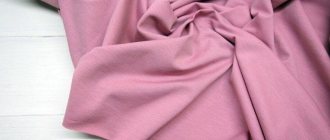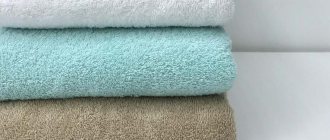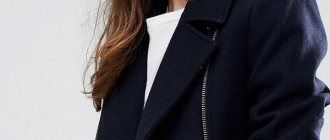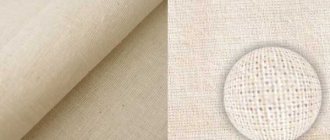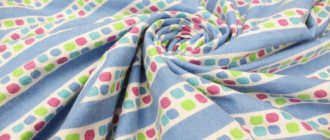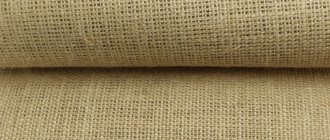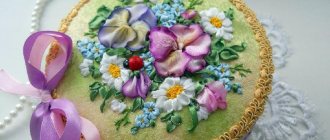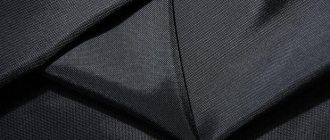Description of waffle fabric
Bleached waffle fabric, sometimes called waffle fabric, is a quality cleaning material.
It can be used to wipe not only dirt and liquids, but also to wipe your hands and face. Budget towels are also made from bleached waffle fabric, which are widely used in factories and railways. The waffle fabric received its name due to its checkered structure, which is why it resembles confectionery waffles. The waffle fabric is made from 100% cotton, due to which it absorbs moisture very well. But the ability to absorb moisture also depends on its quality, the most important indicator of which is density.
Benefits of fabric
Waffle fabric has many advantages - it is one of the most environmentally friendly materials. Due to hypoallergenicity, products made from waffle fabric will not cause absolutely any irritation to the skin and will be safe; the material is ideal for everyday use.
In addition, waffle fabric has high hygroscopicity, so it absorbs moisture well and copes well with its main functions. Due to the unique and special structure of the material, no lint or other marks remain on the surface. Here are the main advantages of this fabric:
- high strength and reliability (even when wet, the fabric does not lose its positive characteristics and copes well with almost any impact)
- the material is easy to process
- a wide range of colors, thanks to which it is possible to choose products that will perfectly match any style
- waffle fabric is very accessible and has a relatively low cost
- good breathability
- long service life
Wafer width
Another characteristic of bleached waffle fabric is its width. Currently, waffle sheets are used mainly in the following widths:
- 45 cm, one of the popular sizes of waffle sheets. Convenient for cutting towels.
- 50 cm, a less used size, since the standard size of towels is 40x70 cm or 40x80 cm, respectively, trim remains when cutting.
- 80 cm is also a fairly used size, again due to the convenience of cutting towels.
Also, sometimes on the market there is a size of 40 cm, this is nothing more than an 80 cm roll cut into 2. It is interesting to some consumers, but the disadvantage of this size is that 1 edge remains unprocessed (the edge of the cut). Other “factory” sizes have both edges processed.
Waffle cotton: types and applications
Waffle cotton is a textured cotton fabric. It appeared in Turkey more than two hundred years ago. A special weaving creates a three-dimensional pattern on the front side of the fabric (square cells with edges), which is so similar to the surface of a wafer. This fabric texture has an increased surface area and, as a result, absorbs and retains more moisture.
Content
- Characteristics of waffle cotton fabric
- A variety of waffle cotton
- How to care for waffle cotton
- Applications of waffle cotton
Characteristics of waffle cotton fabric
Properties of waffle textiles:
- Does not cause allergies, suitable for sensitive and delicate baby skin.
- High hygroscopicity. The fabric absorbs a large amount of moisture, which is ideal for towels, cleaning textiles, bathrobes.
- Strength, wear resistance.
- Retains heat well.
- Environmentally friendly.
- Waffle cotton is highly breathable.
- The fabric is smooth and does not leave lint behind.
- Pleasant to the touch. The waffle fabric is soft and pleasant to the body.
- Low price.
A variety of waffle cotton
There are four types of waffle fabric:
- Harsh. This fabric is made from unbleached fibers. The fabric has a light beige-gray color. It is mainly considered as a semi-finished product for further processing or for technical purposes. In this state, the fabric does not absorb moisture very well and is hard to the touch. Rough textiles are not suitable for the production of clothing and towels.
- Bleached. Obtained by further processing of raw material. It is widely used in industry. Bleached waffle cotton is soft and pleasant to the touch and perfectly absorbs moisture.
- Plain painted. Obtained after dyeing bleached fabric. The fabric acquires an even, beautiful color, but it can no longer be washed at high temperatures.
- Printed. An image of different colors and textures is applied to the dyed or bleached canvas.
How to care for waffle cotton
Waffle cotton is a low-maintenance fabric. The basic rule that should be followed when caring for plain-dyed fabric is the temperature regime when washing. The water should not be higher than 40 degrees, and the detergents should not be aggressive. The waffle fabric does not need to be ironed, but if there is such a need, do not press the iron with force; it is better to use steam.
Applications of waffle cotton
This practical material is widely used in everyday life.
- Kitchen textiles. Potholders, towels, aprons, and cleaning napkins made of waffle cotton absorb moisture well and last a long time.
- Bath accessories for home and more. Waffle robes and towels are purchased by hotels, spa complexes, sports and medical centers. Bleached cotton can be boiled, is hypoallergenic, soft to the touch and highly durable.
- Wipes for cleaning premises. The low cost allows you to safely use waffle cotton for cleaning: washing glass and mirrors, wiping surfaces from dust and dirt. The fabric is soft, absorbs moisture well and does not leave lint behind.
Waffle cotton is a universal material that is useful both at home and at work.
Wafer density
At the moment, in Russia, fabric with a density of 120 g/m2, 145 g/m2 and 165 g/m2 is in demand, less often fabric with a density of 200 g/m2 and higher. Waffle fabric is supplied at retail in rolls of 50, 60, 70 linear meters, and wholesale in bales. A bale is several rolls, usually 5-6, packed in plastic film, packaging fabric or paper. Most often there are 250 - 300 linear meters in a bale. m.
Waffle fabric in Russia is produced in accordance with the specifications of a specific manufacturer, or according to GOST 11027-80. From 01/01/2016, a new GOST for wafer fabric 11027-2014 was introduced, this means that now all documents confirming quality are issued for compliance with the new GOST, but old ones issued earlier will be valid until the expiration date.
Waffle towels - description and characteristics
Description of waffle fabric
Bleached waffle fabric, sometimes called waffle fabric, is a quality cleaning material.
It can be used to wipe not only dirt and liquids, but also to wipe your hands and face. Budget towels are also made from bleached waffle fabric, which are widely used in factories and railways. The waffle fabric received its name due to its checkered structure, which is why it resembles confectionery waffles. The waffle fabric is made from 100% cotton, due to which it absorbs moisture very well. But the ability to absorb moisture also depends on its quality, the most important indicator of which is density.
Characteristics of wafer fabric
So, the main characteristic is density, which is very different and can vary from 80 g/m2 to 240 g/m2. With a density of 80 g/m2, the waffle fabric is more like thick gauze and is rarely used (and only because of the lowest price). And waffle fabric weighing 240 g/m2 is a dense and high-quality material, but also the most expensive.
Wafer width
Another characteristic of bleached waffle fabric is its width. Currently, waffle sheets are used mainly in the following widths:
45 cm, one of the popular sizes of waffle sheets. Convenient for cutting towels. 50 cm, a less used size, since the standard size of towels is 40x70 cm or 40x80 cm, respectively, trim remains when cutting. 80 cm is also a fairly used size, again due to the convenience of cutting towels. Also, sometimes on the market there is a size of 40 cm, this is nothing more than an 80 cm roll cut into 2. It is interesting to some consumers, but the disadvantage of this size is that 1 edge remains unprocessed (the edge of the cut). Other “factory” sizes have both edges processed.
Wafer density
At the moment, in Russia, fabric with a density of 120 g/m2, 145 g/m2 and 165 g/m2 is in demand, less often fabric with a density of 200 g/m2 and higher. Waffle fabric is supplied at retail in rolls of 50, 60, 70 linear meters, and wholesale in bales. A bale is several rolls, usually 5-6, packed in plastic film, packaging fabric or paper. Most often there are 250 - 300 linear meters in a bale. m.
Waffle fabric in Russia is produced in accordance with the specifications of a specific manufacturer, or according to GOST 11027-80. From 01/01/2016, a new GOST for wafer fabric 11027-2014 was introduced, this means that now all documents confirming quality are issued for compliance with the new GOST, but old ones issued earlier will be valid until the expiration date.
Types of waffle fabric
All waffle fabrics are divided into 4 types:
- Harsh. Made from fibers that do not bleach. The color is light, from beige to yellowish with gray. This material is rough, absorbs water worse than treated fabrics, and is therefore used exclusively for technical purposes.
Bleached. This is a product of processing harsh fabric. Soft to the touch, absorbs liquids well, and has a white color. Used for towels and any other waffle rags.
- Plain painted. It is bleached and then dyed a specific color (blue,
red, yellow, green, etc.). It is not recommended to boil such products because they shed easily.
- Printed. A type of bleached, additionally decorated with drawings on top.
Used for sewing decorative kitchen and bath towels.
Also, the canvas may differ in technical characteristics:
Width: 40-45 cm;
Winding: from 50 to 70 meters;
Density: from 100 to 240 g/sq.m;
Cell size: from 1 to 10 mm.
How to distinguish a fake from a high-quality wafer fabric
The fabric has a huge number of high-quality properties, but this does not apply to every product purchased. You need to be able to choose correctly so as not to miss the mark with quality. Low-quality material will not only not absorb moisture well and fight dirt, but can be very harmful. Therefore, before purchasing you need to pay attention to the following indicators:
- Compound. Despite the fact that waffle fabric is still considered a natural material, some craftsmen in China produce it from synthetic fibers. This not only negates all properties, but is also harmful, and synthetics are easily flammable, which can be dangerous in everyday life.
- Density. In order to get the highest quality fabric, you need to choose the highest density. In addition, such a product will last many times longer.
- Coloring. Bleached waffle towel fabric is the best option; it looks beautiful, is practical and will fit into any room. If you want something brighter, then you need to take plain-dyed or printed fabrics.
Product made of material
Important. A good fabric must comply with all GOST standards.
Manufacturers of wafer fabric
The largest producers of “wafers” in the Russian Federation are the following enterprises:
- Ivanovo textiles (“Tissue Empire”, PF “Red October”, “Ivtechno”, etc. - Ivanovo).
- Teykovsky cotton mill (Teykovo, Ivanovo region).
- Cartel (Ivanovo region, Kineshma).
- LLC "Textile-Contract" - Oryol region.
- Kursktrikotazhprom (Kursk).
- Your fabrics (Moscow and Moscow Region, Kolomna, Reutov, Khimki, Shchelkovo).
Textile enterprises producing waffle fabrics in Belarus are located in the cities of Minsk, Mogilev, Kobrin.
Where and how to use waffle fabric
Due to its many positive properties, wafer fabric is used in various fields. The key reasons for mass use are low cost, hygiene and ease of maintenance. That is why “wafer” is used in medical institutions, hotels, and trains. In public places, it is important to wash used textiles at very high temperatures in order to effectively remove all dirt, and waffle fabrics can withstand this very well. Due to its hypoallergenic nature, the fabric is used for treating skin (suitable even for newborns).
You might be interested in this Properties of felted Loden wool: what it is made from and what can be sewn
Towel
You can often find such products at service stations, because... they are able to efficiently remove technical contaminants both from the car itself and from spare parts, without scratching them. “Waffle” removes traces of oil very well and without leaving a trace. These products have also found active use in everyday life for various types of cleaning (especially waffle microfiber), wiping hands and dishes.
Bathrobes, slippers, napkins, potholders, etc. are sewn from plain-dyed or printed fabric. And everyone especially loved waffle fabric for the production of towels.
There is a lot of information on the Internet on how to sew a waffle towel, so every housewife can simply buy the fabric and make everything according to her desired size.
Use in everyday life
Production of wafer fabric
The waffle fabric itself is divided into several types. This is a harsh, bleached, plain-dyed and printed fabric.
Each type is obtained at a certain stage of production. The first type (severe) is obtained at the very first stage, i.e. immediately after weaving. This fabric turns out to be very dense and stiff, the initially obtained color is pale beige. Next, the canvas is trimmed. At this stage, debris and various impurities are removed. The result is a soft, perfectly white fabric that is ready for sale. But it doesn't always end there. There is a stage at which the canvas is painted, i.e. becomes plain-colored (painted in a uniform, monochromatic color) or printed (painted by applying a pattern).
Severe type
The “waffle” effect is obtained due to the combined weave of threads, which on the front side creates convex boundaries, between which a depression is formed.
Important. During production, they always rely on OKPD 2 so that the wafer fabric meets all standards in Russia.
Printed fabric
